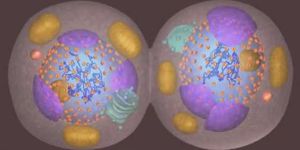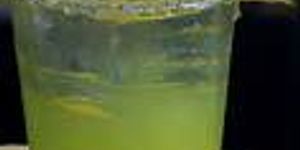Videos
Mitosis
MAR 19, 2014 12:00 AM PDT
Share
Saving Grassland Diversity Through Grazing
 It's been estimated that somewhere between 20-40% of the Earth's land area is grassland, and 10% of the human population resides on those grasslands. However, we humans have a disproportionate effect on these grasslands, as we do in many other aspects of ecology. One of the major effects we cause is over-fertilization of grasslands, according to the Nutrient Network.
It's been estimated that somewhere between 20-40% of the Earth's land area is grassland, and 10% of the human population resides on those grasslands. However, we humans have a disproportionate effect on these grasslands, as we do in many other aspects of ecology. One of the major effects we cause is over-fertilization of grasslands, according to the Nutrient Network.What's wrong with too much fertilizer? Among other things, the excess nitrogen - from livestock manure disposal and added chemical fertilizers for crops/lawns - in the soil encourages the growth of plant species that can crowd-out native plants that have adapted to a lower nutrient level, reducing valuable grassland biodiversity.
Combine this effect with increasing conversion of grasslands to pasture for livestock, and the challenge to lower-nutrient plant species is magnified. Can the effect be reversed? Scientists with the Nutrient Network think it can, through a simple mechanism - allow animals to graze on the faster growing plant species and keep the population in check.
Native grazing animals like elk are thought to be more efficient in controlling the fast-growing plant species, but until recently that theory has not been tested on a wide scale. The research team with the Nutrient Network put that theory to the test. A summary of their work is scheduled for publication in Nature.
To remove regional bias, the team chose 40 locations around the world and established four separate test plots in these areas. Two plots were fenced to keep out grazing animals, and the other two were not. One plot from each of these categories was fertilized while the other was left with the native nutrient content.
Animal populations were not adjusted in any way. Some areas had plentiful native animals, others were being used for livestock, and still others were relatively free of grazing animals of any type.
The research team found that in the fertilized areas, diversity of the plant population decreased where no grazing was allowed, and increased in areas including the grazing animals. The differences were primarily attributed to the grazing animals removing the taller, light-blocking plants and allowing more diverse, ground-hugging plant species to flourish.
In an area with limited nutrients, plants that have adapted and thrived are generally going to be low to the ground. Faster-growing plant species can easily overtake the adapted grasses and eventually crowd them out or kill them off without the neutralizing effect of grazing.
The research team also found that the size of grazing animals made more difference than the level of domestication. From wildebeests in the African Serengeti to ibex in India and cattle in the United States, the larger animals were more effective at reducing the faster-growing grasses compared to smaller animals, such as rabbits. That's certainly not surprising - larger animals can easily reach taller, light-blocking plants and have more consuming capacity per animal - but it is good to verify the effect.
There are plenty of issues to consider for maintaining a balanced ecosystem, such as overpopulation of the controlling animals, effects on predators - and the fact that more large animals means more fertilizer, so to speak. Nevertheless, this study provides useful insight into the ecosystem of the grasslands, and how it can be managed for the benefit of all.
Sponsored by

You May Also Like
Loading Comments...








